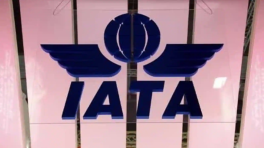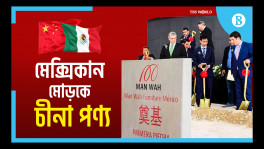Understanding the cold-chain challenge for a Covid-19 vaccine
Universal vaccine access is an existing major challenge in low and middle-income countries mainly due to the lack of fully integrated, functioning cold chains

At the University of Birmingham and with colleagues here in Bangladesh at Brac University and Buet - funded by the UK Government (UK Research and Innovation) - we are leading a fast-track research programme to design novel methods and instruments to assist policy-makers in developing the most sustainable interventions to support the cold-chain for Covid-19, but also to provide last legacy.
An effective vaccine is seen as the world's best bet for overcoming the pandemic.
To this end, governments, multilateral agencies and the private sector have been investing heavily into the research and development of Covid-19 vaccines.
However, achieving herd immunity means delivering the vaccine effectively to 60-70% of the population. This translates to maybe 5.5 billion people.
In the likely case that the vaccine requires two doses, this could equate to 11 billion doses to be distributed.

Given the volume and speed required to get our economies going again, this is probably the single biggest logistics challenge we have ever faced.
Universal vaccine access is an existing major challenge in low and middle-income countries mainly due to the lack of fully integrated, functioning cold chains.
It is estimated that nearly 3 billion of the world's 7.8 billion people live in areas that lack temperature-controlled storage to deliver the Covid-19 vaccines.
It is also calculated that equitable distribution of the Covid-19 vaccine globally would prevent 61% of subsequent deaths, but were it to be distributed to high-income countries first we would avoid only 33% of those deaths.
We therefore urgently need to ensure robust distribution capacity.
Key barriers faced include: insufficient capacity; inefficient cooling equipment; inadequate maintenance; lack of access to energy.
Recent estimates indicate that as much as 25 percent of vaccines may be wasted globally in some countries every year.
And equally while each country is quantifying the number of health workers required to immunise their population, we must not miss the fact that a lack of qualified engineers will lead to long response times to equipment malfunctions and broken cold-chains.
Even in countries with robust vaccine programmes there are likely to be challenges in managing this volume of distribution.
India for example has the world's largest vaccine programme and distributes 400 million vaccines a year, immunising 56 million people.
India plans to initially immunise 200 to 250 million people against Covid-19 in six months once the vaccine is available.
Assuming a two-dose vaccine, the programme would need 400-500 million vaccine doses in a matter of months.
Some estimates suggest it will take until 2023 for India to achieve herd immunity – 800 million people and 1.6 billion doses.
And existing vaccine campaigns must be simultaneously maintained.
Unicef and WHO estimate that up to 80 million children are at risk of missing out on vaccinations against vaccine-preventable diseases due to the pandemic.
Given the fact that large proportion of the population live in rural, remote areas in developing countries, the key challenges for Covid-19 immunisation will likely be outreach and last mile distribution.
Geographical barriers, poor infrastructure such as lack of transportation and bad road conditions already place burdens on health care workers and reduce the ability to deliver frequent immunisation sessions.
While the ultra-low temperatures of the Pfizer vaccine adds a unique set of problems, there are other (fridge stable) vaccines showing good results - such as from Oxford - which will be better suited for wider population coverage.
This does not change the need for robust cold-chain and the need to ensure equitable distribution but it does perhaps make the types of equipment more standard. Subject to of course their performance.
But in racing to build out capacity, there is a further dimension we need to plan for cold-chains are energy intensive and rely on refrigerants, often with high Global Warming Potential.
Given most of the technologies deployed today will still be in operation in the next decade, this rapid expansion must as far as possible not be based on technologies that are environmentally harmful.
The emergence of sustainable cold-chain solutions, novel technologies which unlock modal shifts as well as the potential for thinking about broader synergistic temperature management services allows us the opportunity to create sustainable and even step change solutions for Covid-19 vaccine deployment that also can deliver resilient and sustainable health cold-chain systems as a lasting legacy.
And in closing let us not forget that alongside vaccines, disposable syringes, Personal Protective Equipment (PPE) and other vaccination supplies will all need to be shipped out to every health centre and rural outreach point.
As we plan the capacity to move everything out, we also need to ensure we are ready to deliver sustainable and safe waste management and disposal recycling.
The author is Professor of Cold Economy, University of Birmingham; Director, Centre for Sustainable Cooling


 Keep updated, follow The Business Standard's Google news channel
Keep updated, follow The Business Standard's Google news channel













